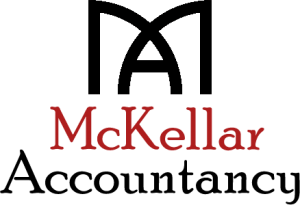[av_one_full first min_height=” vertical_alignment=” space=” custom_margin=” margin=’0px’ padding=’0px’ border=” border_color=” radius=’0px’ background_color=” src=” background_position=’top left’ background_repeat=’no-repeat’ animation=”]
[av_image src=’https://www.mckellaraccountancy.com/wp-content/uploads/2017/02/Label-Clothes-Mockup-vol-4-1030×834.jpg’ attachment=’398′ attachment_size=’large’ align=’center’ styling=” hover=” link=” target=” caption=” font_size=” appearance=” overlay_opacity=’0.4′ overlay_color=’#000000′ overlay_text_color=’#ffffff’ animation=’no-animation’][/av_image]
[/av_one_full][av_one_full first min_height=” vertical_alignment=” space=” custom_margin=” margin=’0px’ padding=’0px’ border=” border_color=” radius=’0px’ background_color=” src=” background_position=’top left’ background_repeat=’no-repeat’ animation=”]
[av_heading heading=’McKellar Accountancy April eNews’ tag=’h3′ style=” size=” subheading_active=” subheading_size=’15’ padding=’10’ color=” custom_font=”][/av_heading]
[/av_one_full][av_one_full first min_height=” vertical_alignment=” space=” custom_margin=” margin=’0px’ padding=’0px’ border=” border_color=” radius=’0px’ background_color=” src=” background_position=’top left’ background_repeat=’no-repeat’ animation=”]
[av_textblock size=” font_color=” color=”]
Enews – April 2017
In this month’s eNews we report on changes to the VAT Flat Rate Scheme which take effect from the start of April. We also consider minimum wage rises, gender pay gap reporting and the roll out of tax free childcare. We also report on three pertinent Budget announcements including the Class 4 NICs u-turn, changes to Making Tax Digital and the reduction in the Dividend Allowance.
Please do get in touch if you would like any further guidance on any of the areas covered.
Article Index
- VAT Flat Rate Scheme – Limited cost trader
- Equality – Gender pay gap reporting
- Minimum wage rises again
- Tax-Free Childcare to be rolled out from 28 April 2017
- Class 4 National insurance u-turn
- Making Tax Digital for Business update
- Reduction in the Dividend Allowance
VAT Flat Rate Scheme – Limited cost trader
Changes are being made to the Flat Rate Scheme (FRS) which take effect from 1 April 2017. These changes may mean that the FRS is less attractive to some businesses and this may result in these businesses deciding to no longer operate under the FRS. In some cases where a trader has voluntarily registered for VAT it may be appropriate to deregister from VAT.
A new higher 16.5% rate will apply from 1 April 2017 for businesses with limited costs, such as many labour-only businesses, using the Flat Rate Scheme. Businesses using the FRS, or considering joining the scheme, will need to decide if they are a ‘limited cost trader’.
Under the FRS a set percentage, determined by the business trade sector, is applied to the VAT inclusive turnover of the business as a one-off calculation instead of having to identify and record the VAT on each sale and purchase the business makes. The percentage rates are determined according to the trade sector of the business and these generally range from 4% to 14.5%.
A limited cost trader will be defined as one whose VAT inclusive expenditure on goods is either:
- less than 2% of their VAT inclusive turnover in a prescribed accounting period
- greater than 2% of their VAT inclusive turnover but less than £1,000 per annum if the prescribed accounting period is one year (if it is not one year, the figure is the relevant proportion of £1,000).
‘Relevant goods’, for the purposes of this measure, must be used exclusively for the purpose of the business but exclude the following items:
- capital expenditure
- food or drink for consumption by the flat rate business or its employees
- vehicles, vehicle parts and fuel, except where the business is one that carries out transport services, for example a taxi business, and uses its own or a leased vehicle to carry out those services
- payment for services, as these are not goods, this would include rent, accountancy fees, advertising costs etc
Examples of qualifying ‘relevant goods’ include stationery (and other office supplies), gas, electricity and cleaning products, but only where these are used exclusively for the business.
Businesses using the FRS will need to ensure that, for each VAT return period, they use the appropriate flat rate percentage, so the check to see whether a business is a limited cost trader will have to be carried out for each VAT return.
These rules come into force from 1 April 2017, so where a business has a VAT period that straddles 1 April 2017, the test to determine whether the business is a ‘limited cost trader’ will only apply to the period from 1 April 2017.
Please contact us if you would like advice on the FRS.
Internet link: GOV.UK VAT notice 733
Equality – Gender pay gap reporting
The government has introduced new requirements for all private and voluntary sector employers of over 250 people relating to equal pay reporting from April 2017.
The Equality Act 2010 (Gender Pay Gap Information) Regulations 2017 (SI 2017/172) mean that large employers must calculate and publish the difference in mean and median pay and bonuses between the men and women they employ. In addition, information must be given about the proportion of men and women receiving a bonus payment and the proportions of men and women in each quartile of their pay distribution.
Key stages for this are:
- 5 April every year, starting in 2017 – take a snapshot of the data
- bonus data is based on the previous 12 months leading up to 5 April 2017
- by 4 April 2018 – the results must be published on the organisation’s website with a signed statement confirming their accuracy
- both the results and statement must remain on the website for 3 years.
Organisations might choose to add some narrative with the results, but this is not part of the requirement.
Internet link: GOV.UK gender pay gap
Minimum wage rises again
Employers need to ensure they are paying their employees at least the appropriate National Minimum Wage (NMW) or National Living Wage (NLW) rate. The rates increase from 1 April 2017.
| From
1 October 2016 |
From
1 April 2017 |
|
| NLW rate for workers aged 25 and over | £7.20* | £7.50 |
| the main rate for workers aged 21-24 | £6.95 | £7.05 |
| the 18-20 rate | £5.55 | £5.60 |
| the 16-17 rate for workers above school leaving age but under 18 | £4.00 | £4.05 |
| the apprentice rate ** | £3.40 | £3.50 |
* introduced and applies from 1 April 2016
**for apprentices under 19 or 19 or over and in the first year of their apprenticeship
Going forward the NMW and NLW rates will be reviewed annually in April.
What are the penalties for non-compliance?
The penalties imposed on employers that are in breach of the minimum wage legislation are 200% of arrears owed to workers. The maximum penalty is £20,000 per worker. The penalty is reduced by 50% if the unpaid wages and the penalty are paid within 14 days. HMRC also name and shame employers who are penalised.
Internet link: GOV.UK NMW
Tax-Free Childcare to be rolled out from 28 April 2017
Tax-Free Childcare, the new government scheme to help working parents with the cost of childcare, will be launched from 28 April 2017.
For every £8 a parent pays in, the government will pay in an extra £2. Parents can receive up to £2,000 per child, per year, towards their childcare costs making a total amount of £10,000. Higher limits of £4,000 and £20,000 apply for disabled children.
To qualify for Tax-Free Childcare all parents in the household must generally meet a minimum income level, based on working 16 hours a week (on average £120 a week) and each earn less than £100,000 a year.
The scheme will be available for children up to the age of 12, or 17 for children with disabilities. All eligible parents will be able to join the scheme by the end of 2017. Parents will be able to apply for all their children at the same time although the government rollout will start with the youngest children first. Parents will need to open an online account, which they can use to pay for childcare from a registered provider.
For those employers who currently offer Employer Supported Childcare, usually in the form of childcare vouchers, these schemes can remain open to new entrants until April 2018. Existing members will have the option to remain in their existing scheme or change over to Tax-Free childcare as their child becomes eligible
A calculator is available on GOV.UK so that parents can check their eligibility for the new scheme and other government provided childcare available.
Internet link: Childcarechoices.gov.uk
Class 4 National insurance u-turn
One of the significant announcements Chancellor Philip Hammond made on Budget Day was the proposed increases to the main rate of Class 4 National Insurance Contributions (NICs) paid by self-employed individuals from 9% to 10% from April 2018 with a further increase planned from 10% to 11% from April 2019.
The Chancellor subsequently announced that the government will not now proceed with the proposed increase in Class 4 NICs rates . Self-employed individuals currently pay Class 2 and Class 4 NICs. Class 2 NICs are to be abolished from April 2018.
Internet link: BBC news
Making Tax Digital for Business update
Extensive changes to how taxpayers record and report income to HMRC are being introduced under a project entitled Making Tax Digital for Business (MTDfB) .
MTDfB is to be introduced in stages and the government has confirmed in the Budget the deferral of some of the obligations for one year. The result of this announcement is that unincorporated businesses and unincorporated landlords with annual turnover:
- above the VAT threshold (currently £85,000) will need to comply with the requirements of MTDfB from the start of accounting periods which begin after 5 April 2018
- at or below the VAT threshold but above £10,000 will need to comply from the start of accounting periods which begin after 5 April 2019.
Companies (and partnerships with a turnover above £10 million) will not come within MTDfB until April 2020.
The government has decided how the general principles of MTDfB will operate. Draft legislation has been issued on some aspects and more is contained in Finance Bill 2017.
Under MTDfB, businesses, self-employed people and landlords will be required to:
- maintain their records digitally, through software or apps
- report summary information to HMRC quarterly through their ‘digital tax accounts’ (DTAs)
- make an ‘End of Year’ declaration through their DTAs. The End of Year declaration will be similar to the online submission of a self assessment tax return but may be required to be submitted earlier than a tax return. Businesses will have 10 months from the end of their period of account (or 31 January following the tax year – the due date for a self assessment tax return – if sooner)
DTAs are like online bank accounts – secure areas where a business can see all of its tax details in one place and interact with HMRC digitally.
Businesses, self-employed people and landlords with turnovers under £10,000 are exempt from these requirements.
Internet link: GOV.UK MTDfB
Reduction in the Dividend Allowance
It was announced in the Budget that the Dividend Allowance will be reduced from £5,000 to £2,000 from April 2018.
Dividends received by an individual are subject to special tax rates. The first £5,000 of dividends are charged to tax at 0% (the Dividend Allowance). Dividends received above the allowance are taxed at the following rates:
- 5% for basic rate taxpayers
- 5% for higher rate taxpayers
- 1% for additional rate taxpayers.
Dividends within the allowance still count towards an individual’s basic or higher rate band and so may affect the rate of tax paid on dividends above the £5,000 allowance.
To determine which tax band dividends fall into, dividends are treated as the last type of income to be taxed.
The government expect that even with the reduction in the Dividend Allowance to £2,000, 80% of ‘general investors’ will pay no tax on their dividend income. However, the reduction in the allowance will affect family company shareholders who take dividends in excess of the £2,000 limit. The cost of the restriction in the allowance for basic rate taxpayers will be £225 increasing to £975 for higher rate taxpayers and £1,143 for additional rate taxpayers.
Internet link: GOV.UK dividend allowance
[/av_textblock]
[/av_one_full][av_one_full first min_height=” vertical_alignment=” space=” custom_margin=” margin=’0px’ padding=’0px’ border=” border_color=” radius=’0px’ background_color=” src=” background_position=’top left’ background_repeat=’no-repeat’ animation=”]
[av_social_share title=’Share this entry’ style=” buttons=” share_facebook=” share_twitter=” share_pinterest=” share_gplus=” share_reddit=” share_linkedin=” share_tumblr=” share_vk=” share_mail=”][/av_social_share]
[/av_one_full]







